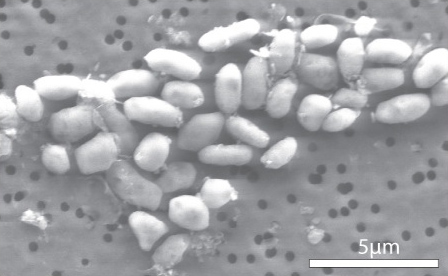The colossal squid (Mesonychoteuthis hamiltoni) is the largest invertebrate animal ever discovered. This great sea creature is believed to call the Southern Ocean home at depths of 1000 meters or more. The habitat of the colossal squid is so untouched by humans that it is nearly impossible to catch sight of one of the magnificent creatures. In fact, if humans were to search for an adult of the species it would be next to impossible to sneak up on the very fast and clever animal. The creature is believed to display abyssal gigantism, which explains why much of our knowledge of the species is from observing a few smaller, less mature specimens found in shallower waters.
The largest known colossal squid was captured on February 22, 2007 in the freezing waters of the Southern Ocean, more specifically the Ross Sea. Fishermen were trying to capture a benthic fish species when, to their surprise, they caught a colossal squid instead. It weighed in at 495 kg (1,091 lb) and was 10 m in length. The partially-collapsed eye of the specimen was measured as 27 cm (10.63 in) wide, making it the largest eye in the entire animal kingdom! The squid was thought to not yet be fully matured and the size of an adult colossal squid is estimated to be 12-15 metres long and upwards of 500 kg.
The following is a YouTube video documenting the discovery of the colossal squid on February 22, 2007:

It has been hypothesized that the colossal squid is an ambush predator, lurking in the dark and pouncing on prey when they least expect it. Unlike their close relatives, the giant squid, colossal squid have arms lined with hooks as well as teeth. Although not a lot is known about the adult species of the colossal squid, it is assumed to prey on large fish and other squid species, using bioluminescence. Many believe the species have a low metabolic rate, only consuming about 30 g of prey daily.
http://www.tonmo.com/science/public/giantsquidfacts.php (accessed October 29, 2012)
Adult colossal squid are thought to be so large that only sperm whales and sleeper sharks are big enough to challenge them. Many sperm whales have been found with giant scars on their backs from battles with the giants. Most of the time, the squid are no match for the sperm whale and many whales have been found with giant squid beaks in their stomachs.
http://ferrebeekeeper.wordpress.com/2012/06/27/ (accessed October 29, 2012)
Although much of the literature on the colossal squid is filled with theoretical assumptions, the number of discoveries of its juvenile form have helped put the pieces together of what an adult may be like. Discoveries like these help put into perspective the magnificence of the ocean and all of the mysterious creatures that are yet to be discovered.
-Kady
Youtube. “Colossal Squid.” https://www.youtube.com/watch?v=09UD7b8lSCo (accessed October 29, 2012)
Wikipedia. “Colossal Squid.” http://en.wikipedia.org/wiki/Colossal_squid (accessed October 29, 2012)
Ferrebeekeeper. “June 27 2012.” http://ferrebeekeeper.wordpress.com/2012/06/27/ (accessed October 29, 2012)
TONMO: The Octopus News Magazine Online. “Giant and Colossal Squid Fact Sheet.” (accessed October 29, 2012)


























